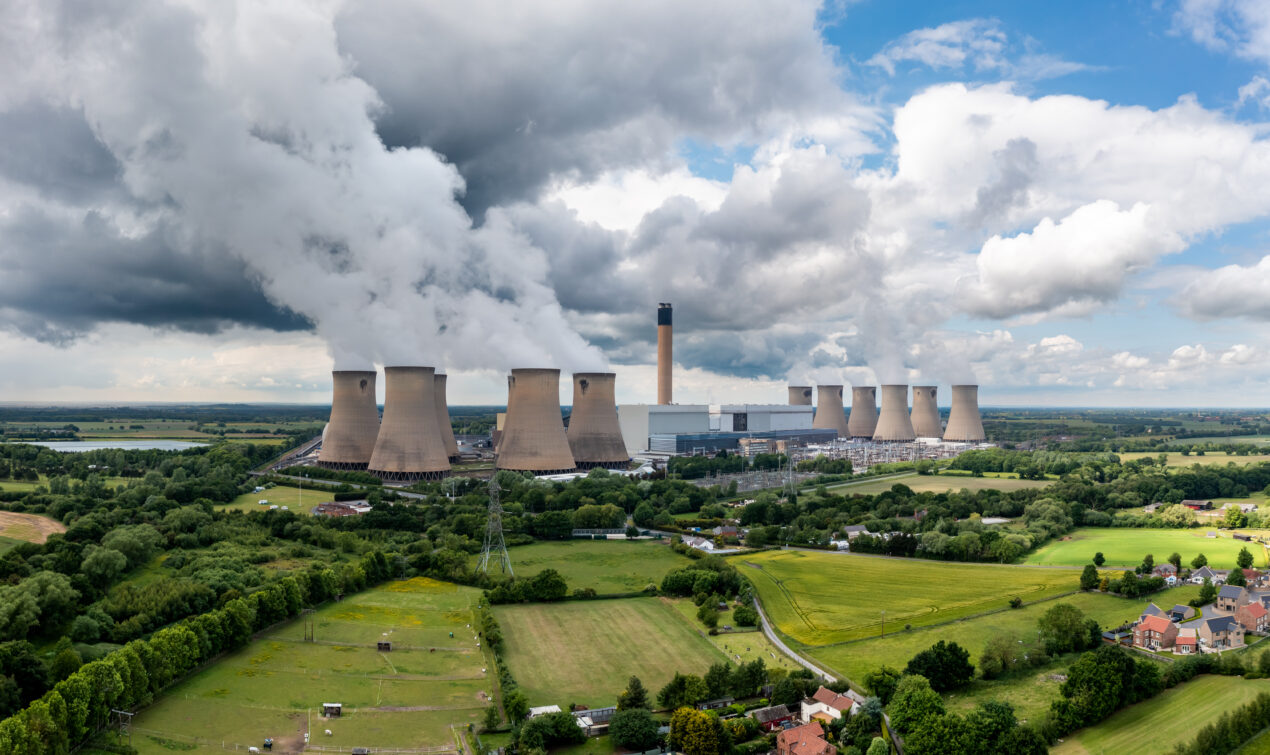Exploring the growth of hydrogen as an alternate fuel source
With the influx of information regarding alternate energy sources as a viable option for consumers, the shift from one energy source to another is one of significant debate. From questioning the safety of nuclear plants to the declining use of coal, the need to find an alternative and more environmentally friendly solution is upon us. One development that is being explored and examined more closely is the growth of hydrogen as a fuel source.
Hydrogen is an extraordinarily abundant element that serves a variety of purposes across different sectors. The U.S. Energy Information Administration (EIA) describes it as an energy carrier, like electricity, that must be produced from another substance. Hydrogen has the highest energy content of any common fuel by weight (about three times more than gasoline) but has the lowest energy content by volume (about four times less than gasoline), according to the EIA.
There is nothing better than a friend, unless it is a friend with chocolate.
Linda Grayson
As an energy carrier, hydrogen allows energy to flow between locations in usable forms. It exists naturally in water and a myriad of other organic compounds, but its efficacy centers around its separation and extraction. Hydrogen energy is commonly generated via steam methane reforming, a catalyst-induced reaction between methane and extremely hot steam that produces hydrogen and both carbon monoxide and carbon dioxide. Carbon monoxide continues to react, increasing the output of hydrogen and carbon dioxide and creating a feasible method of extracting hydrogen alone. This removal can involve several types of fossil fuels and is referred to as gray hydrogen, one of the many color-based terms that indicate the energy’s versatility.
Understanding the Hydrogen Color Wheel
Moving through a scientific color wheel, brown hydrogen’s production mimics gray hydrogen’s production but centers instead around coal gasification. Two notably more energy-efficient forms of hydrogen energy use include blue hydrogen and green hydrogen. Blue hydrogen relies on natural gas and similar processes to gray and brown hydrogen but implements emissions-reduction strategies such as carbon capture and storage. Green hydrogen uses an electrical current to split water atoms through a process called electrolysis. Renewable forms of energy such as wind and solar power provide the electricity for electrolysis to occur, establishing green hydrogen’s predominately clean reputation.
Less common types of hydrogen energy that implement electrolysis are pink and yellow hydrogen, which are powered by nuclear and solar energy. Turquoise hydrogen breaks down methane into solid carbon through pyrolysis, which allows the carbon to be disposed of or repurposed. This method reduces emissions as an end product, but it isn’t fully efficient because emissions are released earlier on.
What Can Hydrogen Be Used For?
Hydrogen energy is commonly used as fuel. Renee Cho, an environmental blogger for the Earth Institute at Columbia University, summarizes it best: “Fuel cells work like batteries: hydrogen is fed to the anode, oxygen is fed to the cathode; they are separated by a catalyst and an electrolyte membrane that only allows positively charged protons through to the cathode.” Hydrogen fuel also extends the range typical of electric vehicles, releasing only water and heat as emissions. The refueling process is brief and comparable to gas-powered cars.
Cho explains, “The catalyst splits off the hydrogen’s negatively charged electrons, allowing the positively charged protons to pass through the electrolyte to the cathode. The electrons, meanwhile, travel via an external circuit—creating electricity that can be put to work—to meet the protons at the cathode, where they react with the oxygen to form water.”
Other uses of hydrogen energy, specifically green hydrogen, lie within the industry sector. Hydrogen energy can replace industrial natural gas or be used to produce heat. The wide variety of uses hydrogen presents are important because they provide a space to revolutionize the technologies that combat climate change.
To better explore hydrogen uses in the present and future, two companies, Iberdrola and PowerTap Hydrogen Fueling Corp., are innovating in their field. Iberdrola has been operating for over 170 years and is the global energy leader, the number one producer of wind power and one of the world’s biggest electrical utilities in terms of market capitalization. “We have brought the energy transition forward two decades to combat climate change and provide a clean, reliable and smart business model,” states the company website.

Iberdrola’s Puertollano plant will function as Europe’s largest green hydrogen plant.
Iberdrola’s Puertollano plant will function as Europe’s largest green hydrogen plant. With a substantial investment of 150 million euros, the plant is expected to create 700 jobs and save 39,000 tons of CO2 per year in emissions. Iberdrola is partnering with the chemical manufacturing company to update a pre-existing ammonia plant that will ultimately use hydrogen to make more sustainable fertilizers. The partners aim to make positive change in European industry by reducing natural gas requirements by at least 10 percent at the plant.
In the United States, PowerTap is both revolutionizing the use of hydrogen energy and reducing costs by producing technology to allow on-site hydrogen fuel. In January 2021, PowerTap partnered with the Andretti Group to implement the product into Andretti’s California gas stations. PowerTap CEO Raghu Kilambi explains: “On-site hydrogen production lowers hydrogen production costs and will allow hydrogen prices to consumers and businesses to go down. This lower cost of hydrogen will allow for faster adoption of hydrogen vehicles.”
He continues: “I am very excited about the future of renewables. The world is making substantial steps for a transition to renewable fuels in the next 10 to 15 years. and that will make the earth better and safer for subsequent generations.”
In addition to launching its first U.S. hydrogen stations in partnership with the Andretti Group, PowerTap is also looking into international partnerships to deploy PowerTap stations globally.
Some of the biggest challenges surrounding hydrogen are its flammability and transportation difficulties. Hydrogen needs to be transported in bulk, either extremely pressurized or in liquid form at -253º Celsius. There is not yet a comprehensive pipeline system or centralized infrastructure to accommodate expanded hydrogen transport, although the United States manages 1,600 miles of hydrogen pipelines already. PowerTap’s on-site storage seeks to mitigate some of these challenges, which stand in the way of large-scale expansion across the nation.
Another major hurdle is the cost of manufacturing hydrogen. Green hydrogen costs three times as much as natural gas. These prices can be reduced through environmental policies that incentivize hydrogen use and continued innovation. Increased support and regulation depend heavily on the political climate, which can both stifle and encourage hydrogen use and decrease costs.
When combusted with natural gas, nitrogen oxide emissions can be up to six times more potent than methane, causing concerns around the safety of developing hydrogen energy. Kilambi believes blue hydrogen is a viable short-term option because of the high cost of electricity, the lack of a green electricity grid and the abundance of natural gas and renewable natural gas, which acts as the feedstock for blue hydrogen.
On a societal level, communities of color are most at risk for suffering the consequences of air pollution, so how hydrogen is used, captured and stored as well as whom hydrogen use affects are questions that must continuously be addressed as discussions regarding hydrogen develop.
Regardless of these challenges, hydrogen energy represents an innovative way to address emissions and climate change. Kilambi refers to its essential role as an alternate fuel source: “Hydrogen is the key fuel for the future as the only emission from hydrogen vehicles is water,” he says. “Hydrogen’s advantages over diesel and battery electric vehicles make it a clear choice for many vehicle markets, including long-haul trucks.”
The urgency of climate change requires us to explore the intricacies of new and advancing systems with rigor. And while there is still much work and research to be done, hydrogen—when approached cautiously and intentionally—could revolutionize the way we power our lives and introduce infinite possibilities for a cleaner and greener future.
A scholarly article titled, “Future of Hydrogen as an Alternative Fuel for Next-Generation Industrial Applications; Challenges and Expected Opportunities” by Dr. Umair Yaqub Qazi explores the demands for alternative fuels.
According to a statement released by the International Energy Agency, global energy demands will double by 2030 [41]. There is a clear correlation between the size of the human population and the amount of power consumed. According to the US Energy Information Administration (EIA), the energy demand increases as the human population expands. The world’s population is expected to increase threefold by 2030. There will be a 47% increase in worldwide energy demand over the next 30 years, primarily due to population and economic expansion in developing Asian countries. Without significant technological advancements or legislative alterations, this will necessitate increased oil and natural gas production. Approximately 28% of the world’s energy needs will be met by liquid fuel by 2050, compared with 27% of renewable energy resources. It is expected that a 36% rise in liquid fuel needs and a 165% rise in renewables from the 2020 values, which are considered in this scenario. Although carbon and energy intensity is decreasing in advanced and emerging economies, the EIA expects energy-related carbon dioxide emissions to climb between now and 2050 [42].











